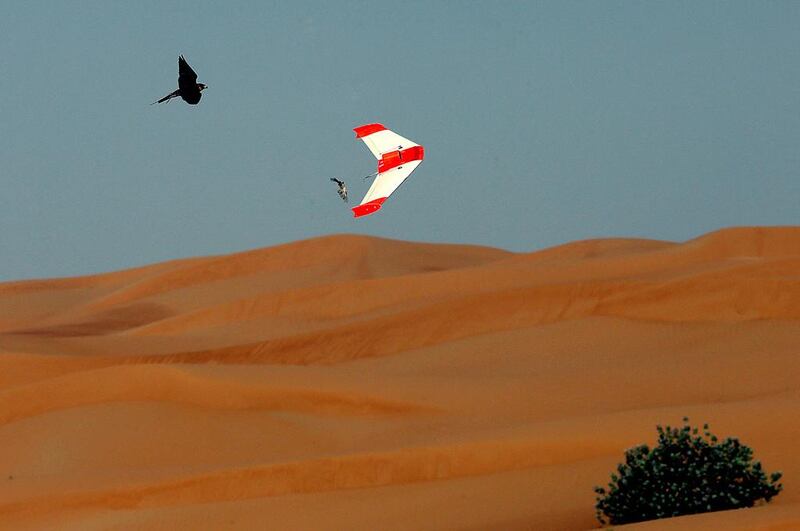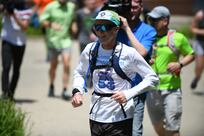DUBAI // A new training device for falcons has been devised to make the world’s fastest animals fitter, faster, stronger and safer.
A falconer of 16 years, Peter Bergh hopes the 1,200 gramme bird-like device will be adopted by mainstream falconry.
Remote-controlled mini planes are used to train the birds, with the lure flying 20 metres behind. The plane is limited and cannot replicate the flight of a falcon, so the training of the bird is limited.
In addition, the plane’s propellers may be lethal to a falcon.
Dr Antonio Di Somma, a veterinarian and director of the Dubai Falcon Hospital, said the new device will save birds’ lives.
“Many are injured with the old technology but, with Peter’s device with the engine covered, it’s much safer. I see around one to two injuries a week at the hospital during hunting season [October to February] from muscle injury to wings, soft tissue, feathers and around one death a month from this.”
Although hunting wild birds is illegal in the UAE and the houbara bustard, the primary prey for the falcon, is now an endangered animal, the sport is still popular as it is part of Bedouin tradition.
Now hunters travel to countries such as Uzbekistan and Kazakhstan to seek prey instead.
Mr Bergh has recorded the birds at speeds of up to 389kph, far beyond the 100kph of the fastest-known land animal, the cheetah, and still far faster than the 120 to 140kph of the training device.
“Falconry is becoming more high tech. Now, what we can do is get bigger, fitter and stronger falcons, more rapidly,” he said.
“Before, they were getting to a certain level of fitness but this new plane can train the bird much more comprehensively, developing more of its muscle groups, training it in different planes of motion and much more naturally to its way of flying.
“Just like humans, the falcons need to train their whole bodies. With the fixed-wing planes, the movement is very one dimensional, while this new technology brings in the twists and turns of natural flight, imitating real hunting and prey. With a winged plane you can’t make these serious manoeuvres. We are seeing the birds move in ways we’ve not seen them move before.”
Mr Bergh said the new vehicle, which is made of a type of foam, reinforced with carbon fibre spars, is not only more efficient for the birds’ training, but safer.
“There is the risk element with the propeller, so you don’t have the freedom of this new technology. There’s that danger aspect with the winged plane,” he said. “The fan on this is cased in housing so the falcon can’t get to it.”
Having experienced about 33 crash landings already with his prototype, Mr Bergh said it is more resilient than the mini planes used before.
“It just absorbs crashes so you can really push the birds, take them low to the ground, do big movements,” he said.
Mark Williams, a falconer for almost 40 years, is also based in Dubai, working for a company that designs tracking devices for falcons, hawks and eagles.
He said the new device is both safer and more efficient than anything he has seen and that it “very much mimics what happens in real life”.
“It’s incredibly good for a few reasons,” he said. “First and foremost, it’s very safe. Up until now, we’ve been using the quad copter and plane, and both pose potential hazards for training, especially in the early stages when the falcon’s trying to figure it out, but the purpose of both devices is to have the falcon fly away from you, give chase to build muscle and, of course, get rewarded until we switch to live quarry and hunting. This new device is incredibly safe and agile and can do more than the two previous devices combined.”
So far, he only has his own prototype but he hopes that it can be manufactured and brought to market in the future.
mswan@thenational.ae






